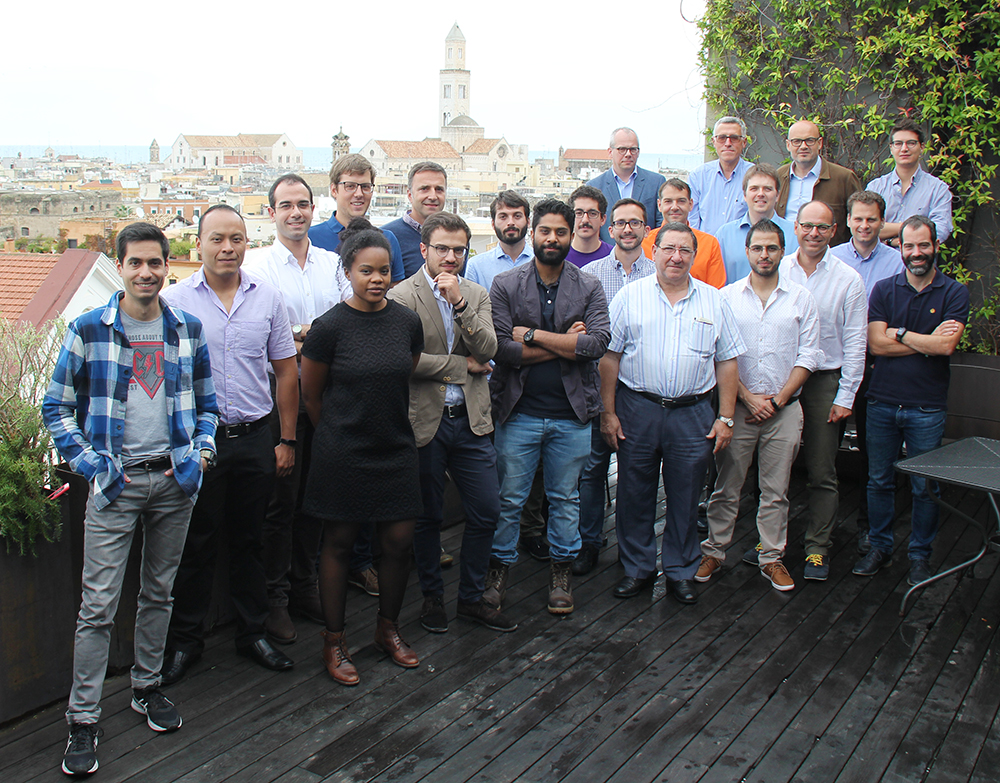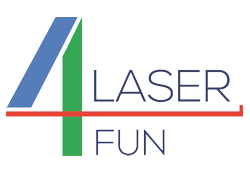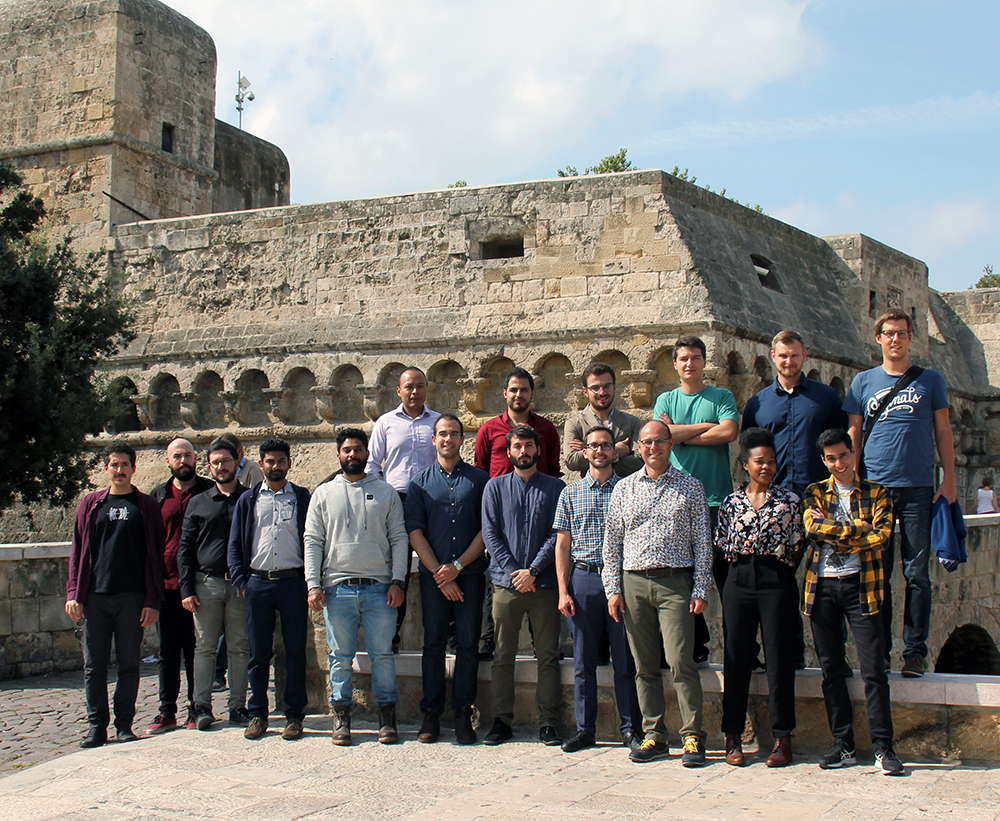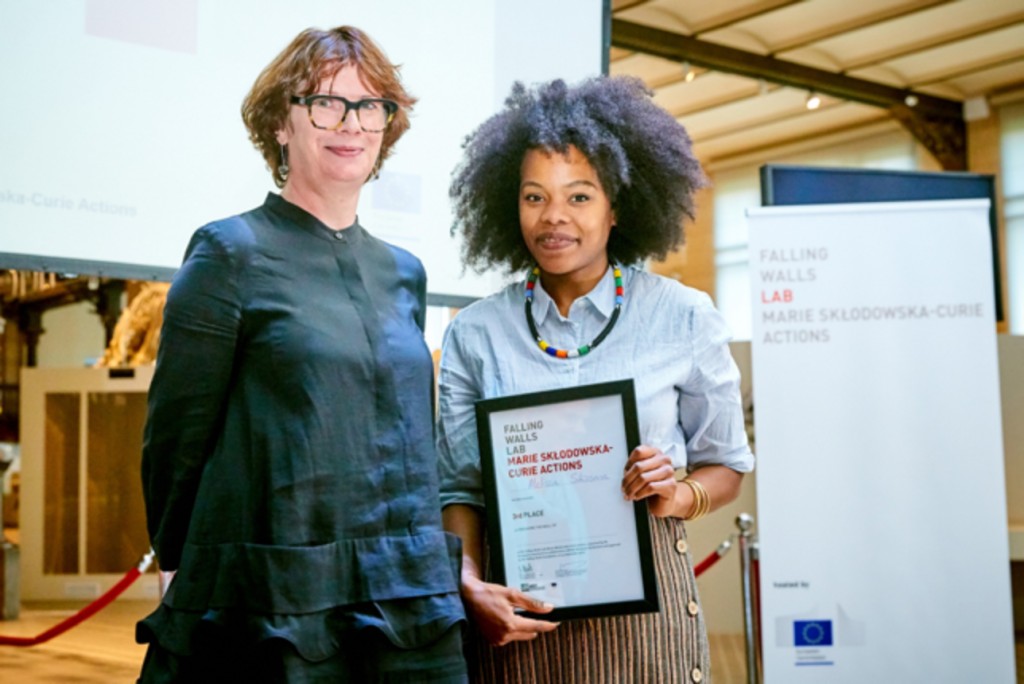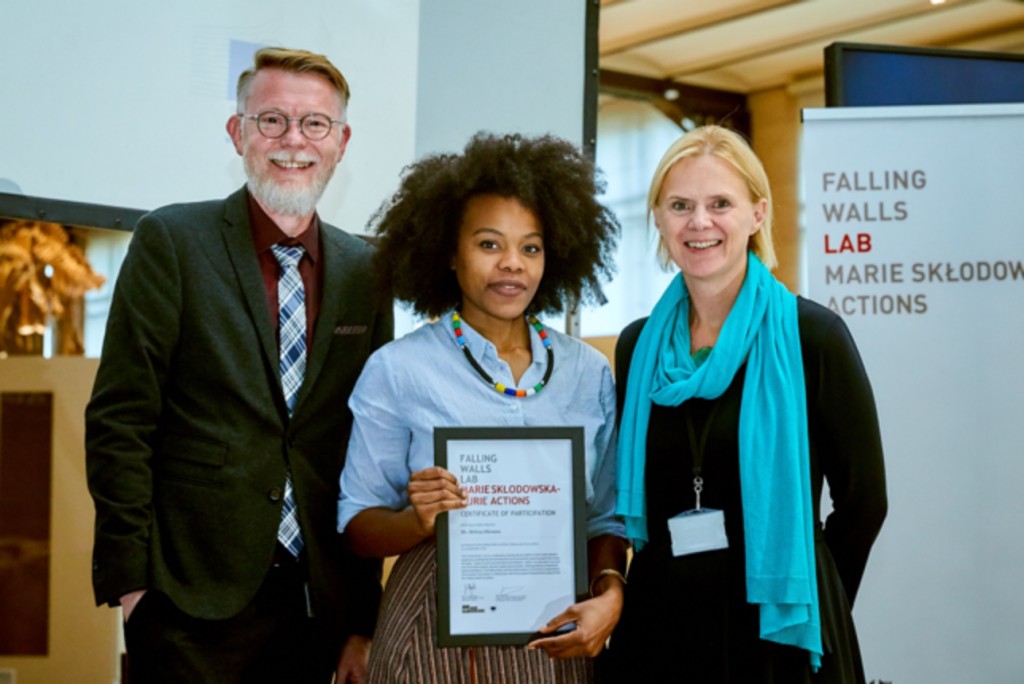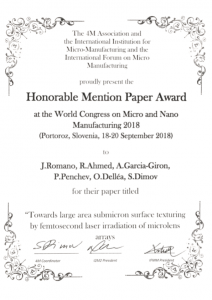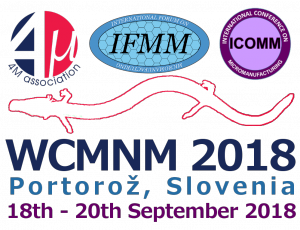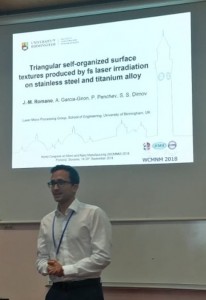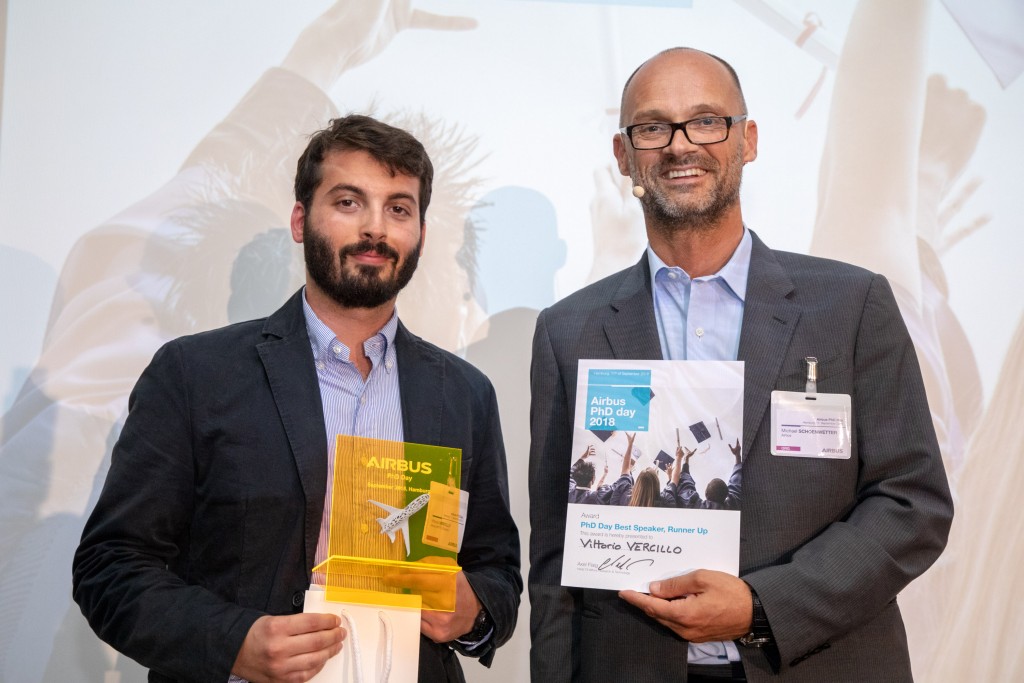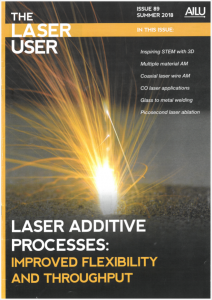Results of the work in the Laser4Fun project has been published as:
Antonio Garcia-Giron, Jean-Michel Romano, Y. Liang, Behnam Dashtbozorg, Hanshan Dong, Pavel Penchev, Stefan Dimov. Combined Surface Hardening and Laser Patterning for Producing Wear Resistant Hydrophobic Surfaces. 2nd World Congress on Micro and Nano Manufacturing (September 2018); doi: 10.3850/978-981-11-2728-1_16
Abstract
This work reports a laser patterning method for producing surfaces with dual scale topographies on ferritic stainless steel plates that are hardened by low temperature plasma surface alloying. Nitrogen and carbon based gasses were used in the alloying process to obtain surface layers with an increased hardness from 172 HV to 1001 HV and 305 HV, respectively. Then, a nanosecond infrared laser was used to pattern the plasma treated surfaces and thus to obtain super-hydrophobicity, by creating cell- or channel-like surface structures. The combined surface hardening and laser patterning approach allowed super-hydrophobic surfaces to be produced on both nitrided and carburised stainless steel plates with effective contact angles higher than 150°. The hardened layers on nitrided samples had cracks and was delaminated after the laser patterning while on plasma carburised samples remained intact. The results showed that by applying the proposed combined approach it is possible to retain the higher hardness of the carburised stainless steel plates and at the same time to functionalise them to obtain super-hydrophobic properties.
